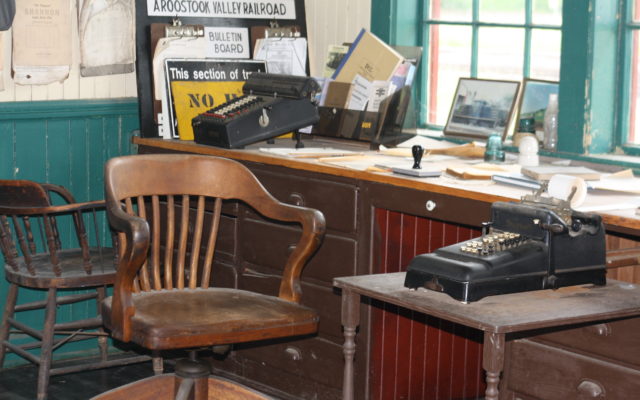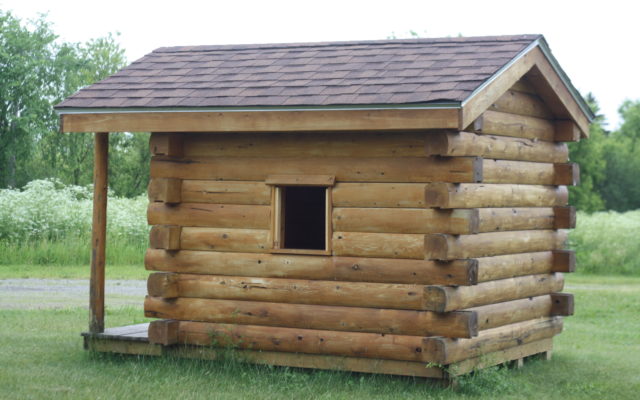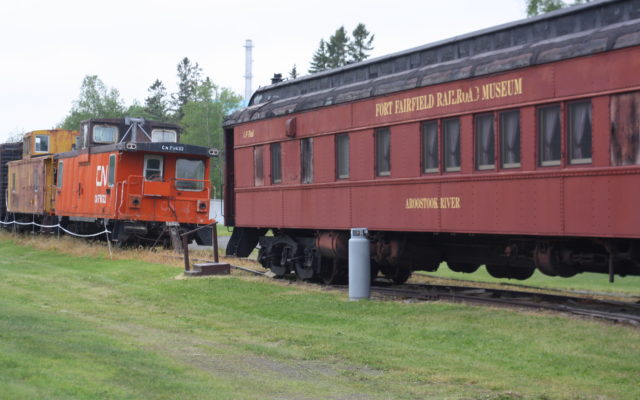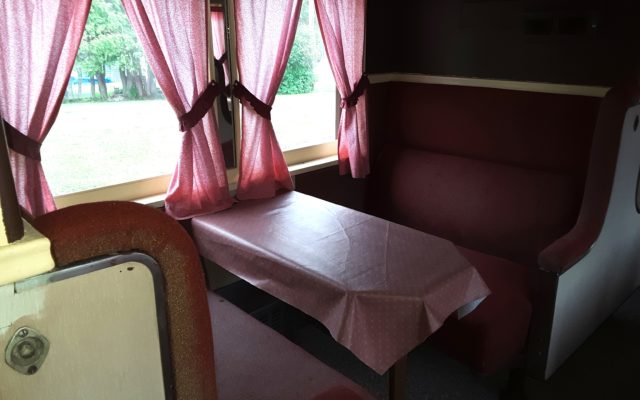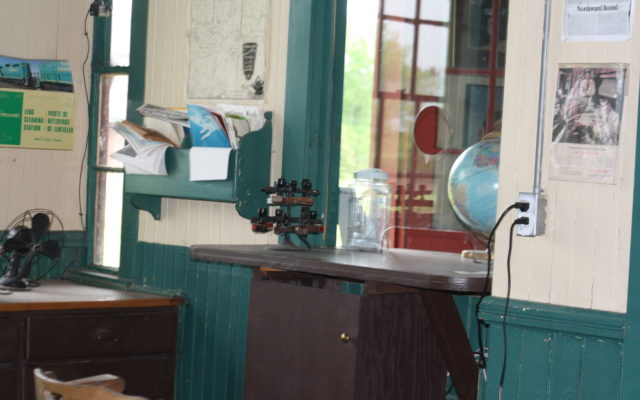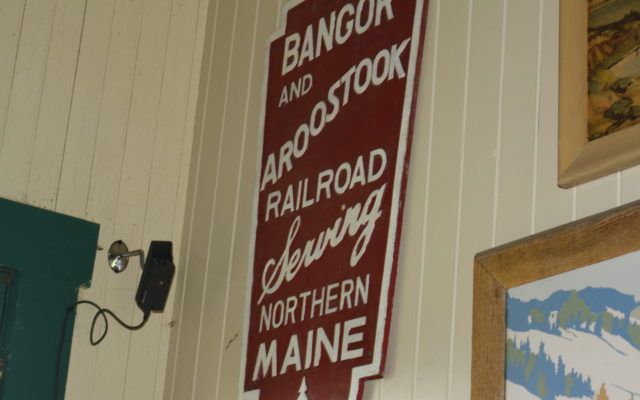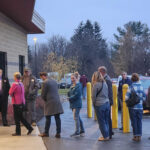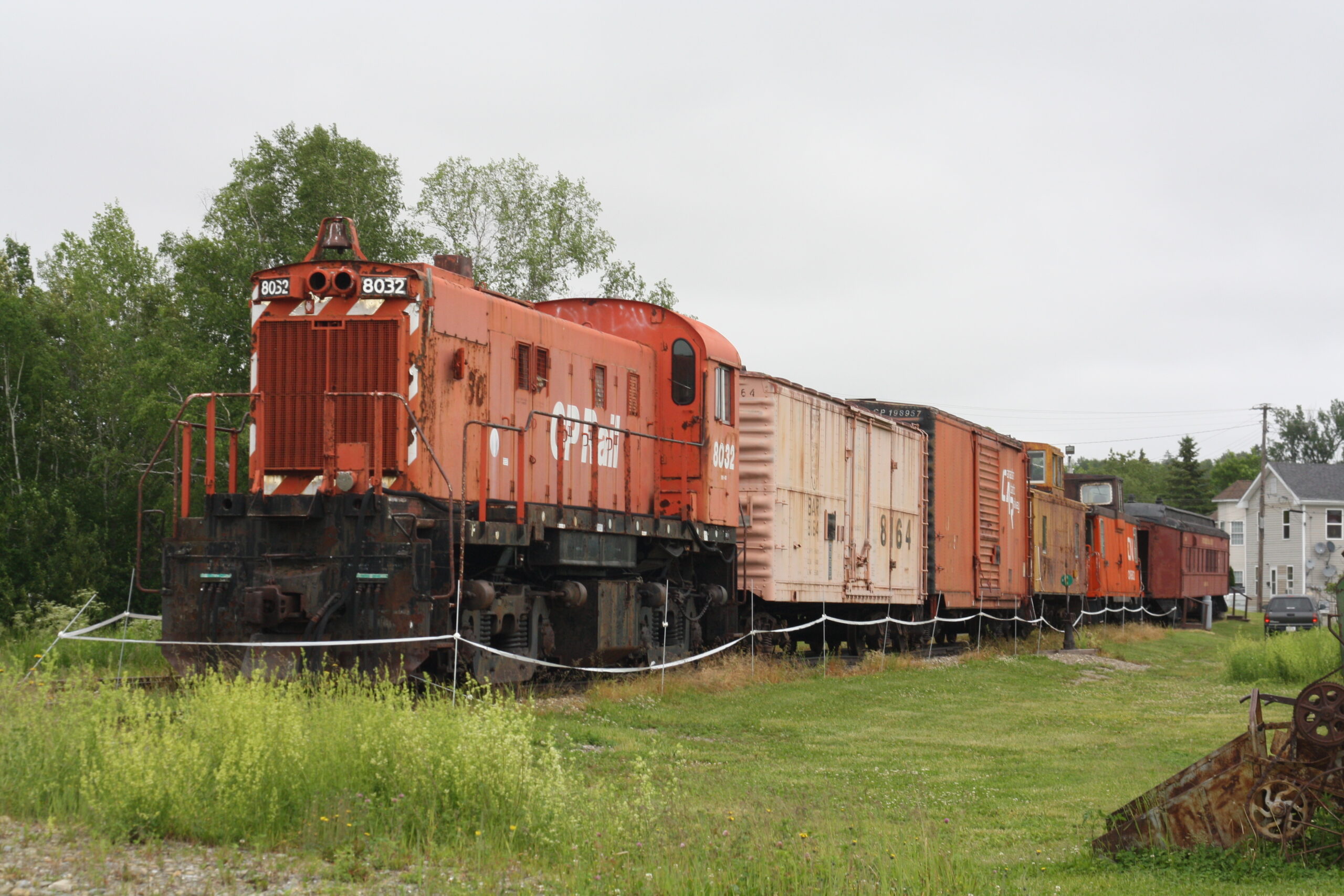
FORT FAIRFIELD, Maine — Before the days when tractor trailer trucks and modern vehicles made product deliveries and personal travels faster than ever, Fort Fairfield was home to a railroad station that connected local farmers, lumber mills and residents with customers across Aroostook County and the rest of Maine.
The Bangor and Aroostook Railroad was completed in 1895, stretching from central Aroostook to southern towns such as Houlton, Smyrna, Island Falls and Oakfield and to the city of Bangor. The railroad originally was projected to have 200 miles of tracks.
In 1915 the railroad added a bridge across the St. John River in Van Buren, further allowing the tracks to connect with Canadian Pacific Railroad tracks along border towns such as Madawaska and Fort Kent.
Canadian Pacific also had a station and tracks that ran through Fort Fairfield due to the town’s proximity to New Brunswick. The peak of the Bangor and Aroostook Railroad’s usage in the 1930s and 1940s maintained 858 miles of tracks.
Today the Frontier Heritage Society in Fort Fairfield maintains the former Canadian Pacific Railroad station, originally located along the Aroostook River, as well as many historic train cars at the site of the former Bangor and Aroostook Railyard at the corner of Depot and Brown streets.
The building that once contained the Bangor and Aroostook Railroad station is now being renovated by a private owner not associated with the Frontier Heritage Society.
“At the time that the Bangor and Aroostook Railroad was built, the population in Fort Fairfield was growing and the town was a major hub much like Presque Isle is today,” said Frontier Heritage president Jim Everett.
Though the majority of Fort Fairfield’s population were potato farmers, the railroad provided numerous jobs for a large portion of the town’s residents. Everett worked at the railyard for M.C. Locke, a store that provided fuel and tire services and sold washers and dryers, during the early 1970s, after tractor trailer trucks had begun to convey many of the deliveries that trains typically fulfilled.
The railroad served as a major marketplace for local potato farmers and brokers from the late 1890s through the 1960s. At the railyard there were more than 100 one to five-door potato houses situated along each side of the tracks that allowed workers to easily unload potatoes.
For the farmers who were unable to leave their properties farther from town, roads called “sidings” brought train tracks to farmers in areas known today as the Maple Grove Road, Murphy Road, East Road and Fairmount Siding.
Similar roadways also allowed loggers to load pulp wood onto train cars more conveniently for transportation to paper mills such as the former Great Northern Paper Company in East Millinocket.
Everett said that as motor vehicles became more popular throughout the 20th century, the Bangor and Aroostook Railroad ceased operations of passenger cars by the early 1960s. But there were times when the train cars proved to be a good option for local folks who did not own a vehicle.
“If someone needed to catch a ride to the next town to go grocery shopping, they would hop on the train and then ride back to one of the siding roads with their groceries,” Everett said.
The Bangor and Aroostook Railyard also was home to hardware stores and stations that offered the trains a chance to refuel before heading north or south down the tracks.
During World War II both the BAR and CP railroads operated a small fleet of passenger trains to transport soldiers. Frontier Heritage Society now owns and showcases one of the CP dining cars that was used at that time. The car weighs 174,000 pounds and stretches 81 feet long across the former BAR railroad site.
When the dining car was rebuilt in 1969, the space served as a boarding and dining car for railway track crews when they were unable to return home some nights. Today, as it did back then, the car contains a furnace, hot water heater, stove, refrigerator, freezer and above the dining booths are beds that railroad workers once used.
“When the Boy Scouts were repairing the car for a project, we found documents underneath the seat cushions that told about the history of the vehicle,” said Wayne Troicke, a member of Frontier Heritage Society.
Today the train cars and BAR museum, which contains antique radios, tools and photographs from the railroad’s heyday, are crucial artifacts that the Frontier Heritage Society uses to tell the unique history of railways in Aroostook County. The museum is one of four buildings the group maintains in Fort Fairfield, including the Friends Church, McIntosh School and 1837 blockhouse.
- A replica of the original Canadian Pacific Railroad station now serves as a museum for both that former railroad and the Bangor and Aroostook Railroad. Both railroads were located in Fort Fairfield beginning in the early 20th century. (Melissa Lizotte | The Star-Herald)
- Located at the site of the former Bangor and Aroostook Railyard in Fort Fairfield is a replica of a one-door potato house that would have been situated near the train tracks. (Melissa Lizotte | The Star-Herald)
- The Frontier Heritage Society in Fort Fairfield maintains a former dining car of Canadian Pacific Railroad at the former Bangor and Aroostook Railyard site. (Melissa Lizotte | The Star-Herald)
- This former dining car of Canadian Pacific Railroad previously provided transportation to soldiers during World War II. (Melissa Lizotte | The Star-Herald)
- The ticket booth of the former Canadian Pacific Railway station can be seen at the railroad museum in Fort Fairfield. (Melissa Lizotte | The Star-Herald)
- The original Bangor and Aroostook Railroad sign is now located at the railroad museum in Fort Fairfield, maintained by the Frontier Heritage Society. (Melissa Lizotte | The Star-Herald)

